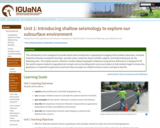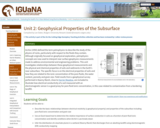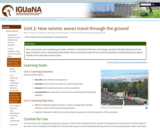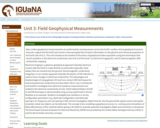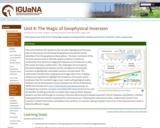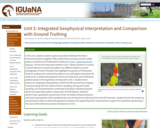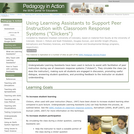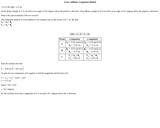
Students will conduct a virtual exploration of Harrier Meadow, a saltmarsh in the New Jersey Meadowlands. They will identify its vulnerability to pollution, its tidal connection to the Hackensack Estuary and the Atlantic Ocean along with its proximity to New York City. Vegetation patterns within this wetland will be explored, focusing on a salinity tolerant native plant (Pickleweed) that is returning to the marsh. The return of such native species is critically important to wetland restoration efforts that aim to reclaim native habitat following decades of environmental degradation since the industrial revolution. These vegetation patterns are the focus of resistivity and electromagnetic surveys that the students explore in the subsequent units of this module. The geophysical surveys aim to better understand the underlying factors controlling the distribution of Pickleweed. By understanding where the Pickleweed is thriving, restoration efforts could subsequently be improved by locating regions of such wetlands with similar underlying factors where Pickleweed (and other native plants) could be successfully reintroduced. In the first unit of this module, students will use Google Earth (on the web), high-resolution video acquired from an Unmanned Aerial Vehicle (UAV) and an ArcGIS Storymap in their exploration. Primary outcome: students comprehend the association between salinity and Pickleweed and formulate plans to test a hypothesis for Pickleweed persistence/patterning in Harrier Meadow that will ultimately be implemented using near surface geophysical methods in the remaining units of the module.
(Note: this resource was added to OER Commons as part of a batch upload of over 2,200 records. If you notice an issue with the quality of the metadata, please let us know by using the 'report' button and we will flag it for consideration.)
- Subject:
- Biology
- Career and Technical Education
- Environmental Studies
- Hydrology
- Life Science
- Mathematics
- Measurement and Data
- Physical Science
- Statistics and Probability
- Material Type:
- Activity/Lab
- Data Set
- Lesson Plan
- Reading
- Provider:
- Science Education Resource Center (SERC) at Carleton College
- Provider Set:
- Teach the Earth
- Author:
- Compiled by Lee Slater, Rutgers University Newark (lslater@newark.rutgers.edu)
- Date Added:
- 09/03/2022
